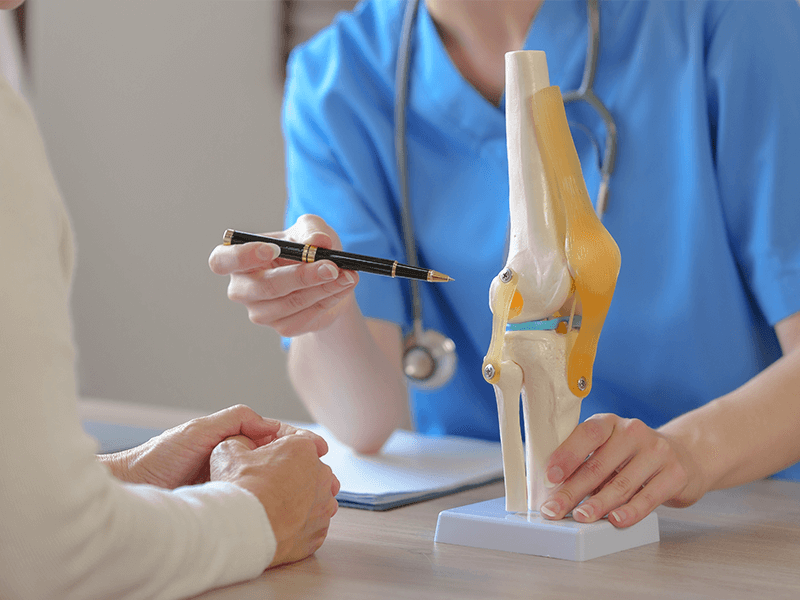Search
Find a Physician
Blog
Dec 8, 2023
Every year, approximately 800,000 knee replacement surgeries are performed in the US alone. This means that, when it comes to accuracy and successful percentage rate, even a small shift for the better could change the lives of so many people out there. One way to improve this accuracy is with the help of robotic knee replacement surgery. Here’s what you need to know about this innovative trend in the medical field.
Before we even start, a robotic knee replacement doesn’t mean you’ll get a robotic knee. It just means that the surgeon will use robotic technology to assist them during the procedure.
We say just, but the difference is incredibly effective in boosting the precision of the procedure and is simply unparalleled.
Robotic assistance is provided during several stages:
The biggest difference, however, comes in the form of robotic assistance (guiding robotic arms for higher precision).
Either way, robotic knee replacement surgery is the next step in medicine, and this technology will only grow ever more sophisticated.
So, now that we’ve cleared up that this is still just a standard knee replacement surgery (only robot-assisted), the next question is, how is a knee replacement surgery done? The procedure is fairly simple:
After this, there’s the process of recovery and rehabilitation. Physical therapy and even exercising after knee replacement can increase the recovery rate.
There are numerous reasons why every modern knee replacement center either already uses robotic knee replacement or is considering introducing it. Some of them are:
There are, however, some disadvantages to robotic knee replacement, as well. For instance:
Like any other technology, as time goes by, these challenges will become increasingly solvable.
On average, the success rate of a knee replacement surgery is about 95%; however, with a robotic knee surgery, there’s a significantly reduced complication rate. Instead of 2.6% of complications noted in traditional knee replacement surgeries, with robotic replacement surgeries, the complication rate is just 1.5%.
Given the number of people who undergo this type of surgery regularly, this percentage reflects a massive portion of the population.
The percentages also depend on the type of surgery. For instance, a robotic total joint replacement is more complex than a smaller surgery.
Speaking about recovery times is always a difficult subject, seeing as many different factors affect it. How big is the initial knee joint damage? What’s the overall health of the patient? What kind of surgical technique was used, and how successfully?
Since it’s more accurate and precise, the tissue damage is supposed to be somewhat smaller, which means that subsequent hospital stays should be shorter. At the same time, your body will recover at regular speed.
This means that the immediate postoperative period might last up to six weeks.
When it comes to the duration of the procedure's effects, most knee replacements last between 15-25 years. Now, because robotic knee replacement is more accurate and precise, it’s more likely that it will fall into the higher category (closer to 25 than 15).
The whole point of robotic knee replacement surgery is to have more precise placement of the joint replacement with a smaller incision. This gives you a better result, more longevity of the implant, and a quicker recovery.
Even the steadiest surgeon’s hand will never be as steady as the hand of a well-calibrated machine. However, expecting robots to replace surgeons anytime soon is a bit naive. Robotic knee replacement surgery is a perfect example of how the crossover between these two worlds works. A surgeon guides and is assisted by this robotic technology in order to achieve superior results and ensure full and quick recovery.
If you want to know more, find an expert in robotic knee replacement surgery at the Orthopedic Institute of New Jersey.
This article was reviewed and approved by an orthopedic surgeon as we place a high premium on accuracy for our patients and potential patients.